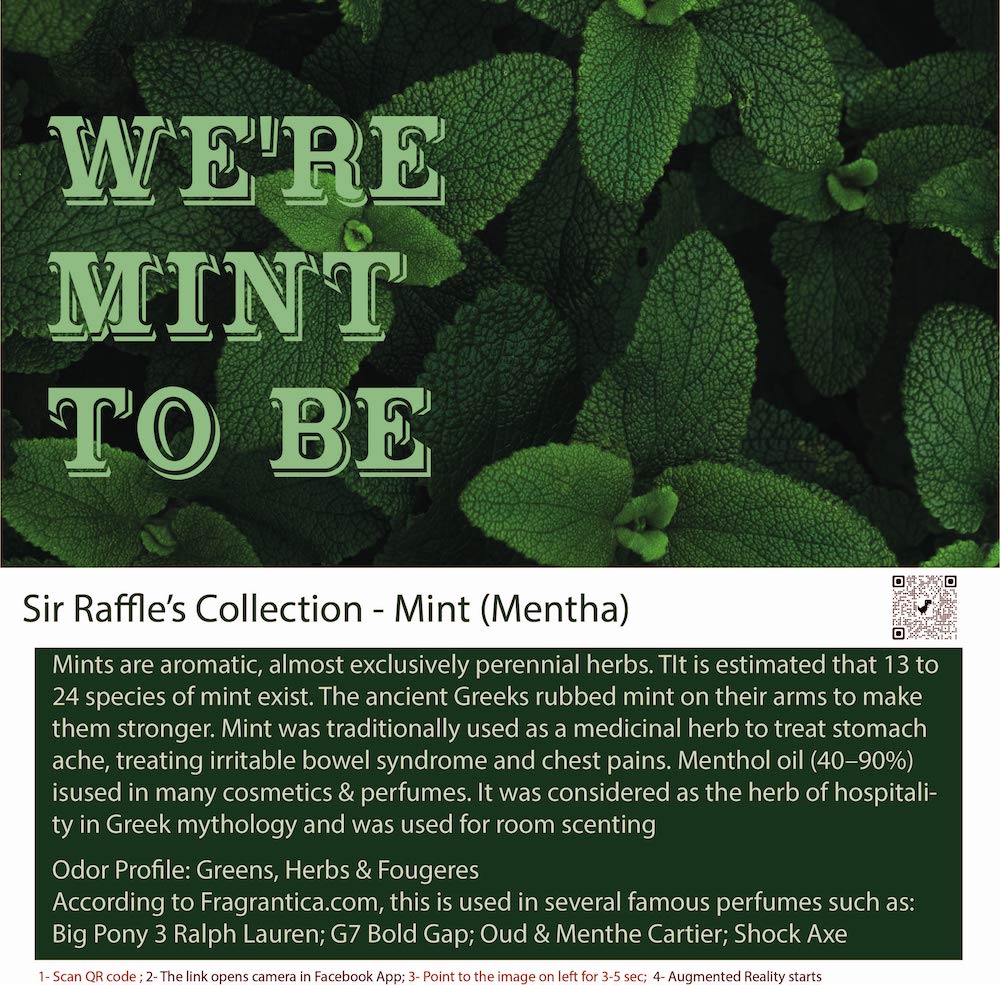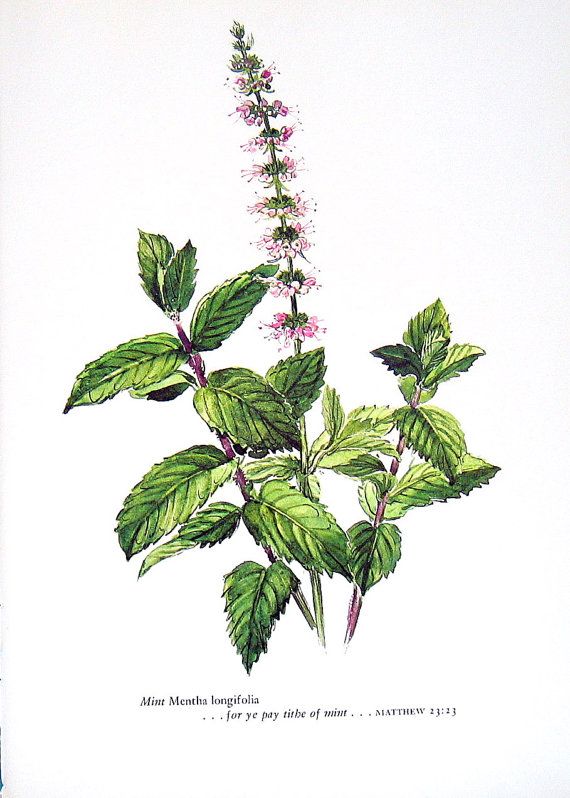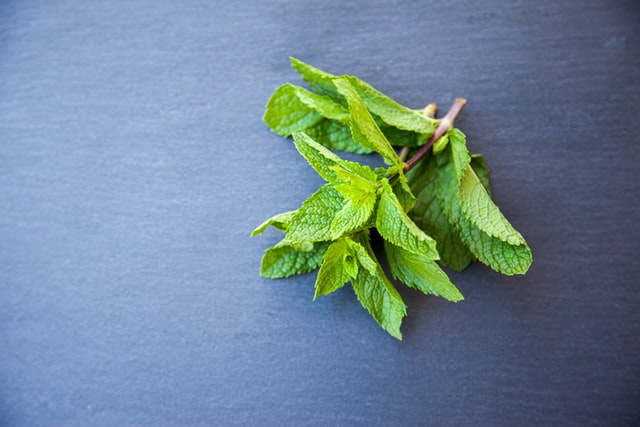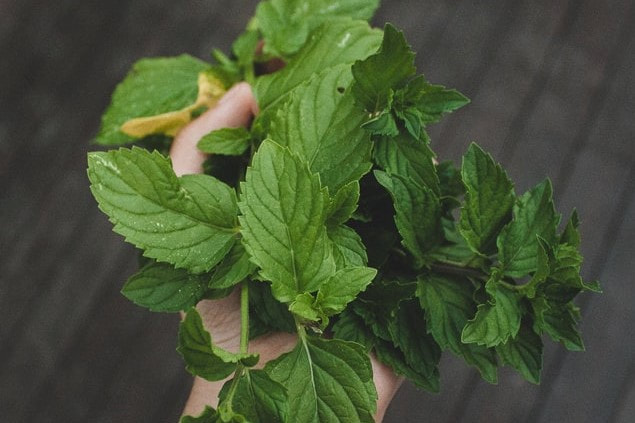Harnessing the Power of Mint Aromatherapy
Mint, a fragrant and versatile herb, has a long and fascinating history of use in perfumes, fragrance, therapeutic oils, food, medicinal systems, and various cultural practices. Belonging to the genus Mentha, there are several species and varieties of mint, including peppermint, spearmint, and various others, each possessing its own unique aroma and properties.
History and Culinary Use: Mint's use dates back thousands of years to ancient civilizations. The ancient Greeks and Romans revered mint for its pleasant fragrance and used it in their baths and as a culinary herb. In medieval Europe, it was a symbol of hospitality, and people would strew mint leaves on the floors of their homes to create a welcoming aroma. Today, mint is widely used in culinary applications, from flavoring teas and desserts to adding a refreshing touch to savory dishes.
Perfumes and Fragrance: Mint's invigorating and refreshing aroma has made it a popular ingredient in perfumes and fragrance compositions. Its cool and crisp scent is often associated with feelings of revitalization and cleanliness. In perfumery, mint is frequently utilized as a top note, providing an initial burst of freshness to a fragrance.
Peppermint and spearmint essential oils are widely used in the perfume industry to create a variety of scents, from sporty and casual fragrances to more sophisticated and complex compositions. Mint is often combined with citrus, herbs, and floral notes to create modern and invigorating perfumes.
Therapeutic Oils and Medicinal Properties: Mint essential oils, particularly peppermint and spearmint, are highly valued in aromatherapy and natural medicine for their therapeutic properties. Peppermint essential oil is well-known for its ability to alleviate headaches, reduce muscle tension, and provide relief from respiratory issues. Spearmint essential oil is used for its calming and uplifting effects, making it beneficial for stress and anxiety.
Both peppermint and spearmint oils are used in massage blends and topical applications to soothe sore muscles and joints. Mint oils are also known for their cooling sensation, making them effective for providing relief from discomfort caused by sunburn or insect bites.
Food and Medicinal Benefits: Mint is not only appreciated for its aromatic properties but is also cherished for its health benefits. In traditional medicine, mint has been used to aid digestion and soothe upset stomachs. Peppermint tea is a popular remedy for digestive issues and is often consumed after meals to promote better digestion.
Mint leaves are rich in antioxidants and have antimicrobial properties, which may contribute to supporting the immune system and promoting oral health. Additionally, mint has been used to alleviate symptoms of the common cold and congestion.
Cultural and Ritual Use: Mint holds cultural significance in various regions and has been integrated into religious and spiritual practices. In some cultures, mint leaves are used as offerings or incorporated into rituals to purify and cleanse the environment. In others, mint is seen as a symbol of prosperity and fertility.
Mint's multi-faceted nature makes it a cherished herb with diverse applications in perfumery, fragrance, therapeutic oils, food, and traditional medicine. Its invigorating aroma, refreshing taste, and beneficial properties have made it a staple in various cultures throughout history. Whether it is used to add a zing to culinary delights, create uplifting perfumes, or provide therapeutic benefits, mint continues to be cherished for its versatility and aromatic allure.
There are several types of mint herbs, each with its distinct flavor and aroma. Some of the most common varieties include:
History and Culinary Use: Mint's use dates back thousands of years to ancient civilizations. The ancient Greeks and Romans revered mint for its pleasant fragrance and used it in their baths and as a culinary herb. In medieval Europe, it was a symbol of hospitality, and people would strew mint leaves on the floors of their homes to create a welcoming aroma. Today, mint is widely used in culinary applications, from flavoring teas and desserts to adding a refreshing touch to savory dishes.
Perfumes and Fragrance: Mint's invigorating and refreshing aroma has made it a popular ingredient in perfumes and fragrance compositions. Its cool and crisp scent is often associated with feelings of revitalization and cleanliness. In perfumery, mint is frequently utilized as a top note, providing an initial burst of freshness to a fragrance.
Peppermint and spearmint essential oils are widely used in the perfume industry to create a variety of scents, from sporty and casual fragrances to more sophisticated and complex compositions. Mint is often combined with citrus, herbs, and floral notes to create modern and invigorating perfumes.
Therapeutic Oils and Medicinal Properties: Mint essential oils, particularly peppermint and spearmint, are highly valued in aromatherapy and natural medicine for their therapeutic properties. Peppermint essential oil is well-known for its ability to alleviate headaches, reduce muscle tension, and provide relief from respiratory issues. Spearmint essential oil is used for its calming and uplifting effects, making it beneficial for stress and anxiety.
Both peppermint and spearmint oils are used in massage blends and topical applications to soothe sore muscles and joints. Mint oils are also known for their cooling sensation, making them effective for providing relief from discomfort caused by sunburn or insect bites.
Food and Medicinal Benefits: Mint is not only appreciated for its aromatic properties but is also cherished for its health benefits. In traditional medicine, mint has been used to aid digestion and soothe upset stomachs. Peppermint tea is a popular remedy for digestive issues and is often consumed after meals to promote better digestion.
Mint leaves are rich in antioxidants and have antimicrobial properties, which may contribute to supporting the immune system and promoting oral health. Additionally, mint has been used to alleviate symptoms of the common cold and congestion.
Cultural and Ritual Use: Mint holds cultural significance in various regions and has been integrated into religious and spiritual practices. In some cultures, mint leaves are used as offerings or incorporated into rituals to purify and cleanse the environment. In others, mint is seen as a symbol of prosperity and fertility.
Mint's multi-faceted nature makes it a cherished herb with diverse applications in perfumery, fragrance, therapeutic oils, food, and traditional medicine. Its invigorating aroma, refreshing taste, and beneficial properties have made it a staple in various cultures throughout history. Whether it is used to add a zing to culinary delights, create uplifting perfumes, or provide therapeutic benefits, mint continues to be cherished for its versatility and aromatic allure.
There are several types of mint herbs, each with its distinct flavor and aroma. Some of the most common varieties include:
- Peppermint (Mentha x piperita): Peppermint is one of the most well-known and widely used types of mint. It has a strong and refreshing flavor with a cool menthol taste. Peppermint is often used in teas, desserts, and candies.
- Spearmint (Mentha spicata): Spearmint has a milder flavor compared to peppermint and is known for its sweet and slightly fruity taste. It is commonly used in cooking, especially in Mediterranean and Middle Eastern cuisines.
- Apple Mint (Mentha suaveolens): Apple mint, also known as woolly mint, has a distinct apple-like aroma and a milder taste. It is often used in salads, beverages, and fruit dishes.
- Chocolate Mint (Mentha x piperita 'Chocolate'): Chocolate mint has a delightful chocolatey aroma and flavor, making it a popular choice for desserts, beverages, and confections.
- Orange Mint (Mentha x piperita 'Citrata'): Orange mint has a citrusy aroma with a hint of orange flavor. It is often used in teas, cocktails, and fruit salads.
- Pineapple Mint (Mentha suaveolens 'Variegata'): Pineapple mint has a pineapple-like aroma and flavor, which adds a tropical twist to dishes and beverages.
- Moroccan Mint (Mentha spicata var. crispa): Moroccan mint, also known as curly mint, has curly leaves and a strong, slightly spicy flavor. It is popular in Moroccan and North African cuisines, particularly in mint tea.
- Vietnamese Mint (Persicaria odorata): Vietnamese mint, also known as laksa leaf or Vietnamese coriander, has a unique spicy flavor with hints of cilantro and mint. It is commonly used in Southeast Asian cuisines, especially in soups and salads.
- Lemon Mint (Monarda citriodora): Lemon mint, also known as lemon bee balm, has a strong lemony aroma and flavor. It is often used in herbal teas and salads.
- Basil Mint (Mentha x gracilis 'Basil'): Basil mint has a combination of mint and basil flavors, making it a versatile herb that can be used in various dishes, including salads, pesto, and sauces.
To experience augmented reality, please open the Facebook-app using QR code and point to the image below
Breathe Better: Functional Breathing Techniques Explained
O the fresh smell and taste of toothpaste, everyday, before we start our day!
Mint essential oil is often used in aromatherapy for its refreshing and invigorating scent. The menthol in mint oil is believed to help clear the mind, promote mental clarity, and improve focus and concentration. Inhaling the aroma of mint oil may also help to reduce feelings of stress, anxiety, and fatigue.
Mint oil can be used in a diffuser to release the aroma into the air, or it can be added to a carrier oil and applied topically to the skin for massage. When used topically, it can also help to alleviate headaches, muscle pain and soreness, and improve the symptoms of conditions such as asthma and sinusitis.
It's important to note that mint essential oil can be irritating to sensitive skin, so it should be diluted before applying to the skin. Additionally, it should not be used directly on or near the face of infants or young children. It's always recommended to seek advice from a qualified aromatherapist or healthcare professional before using mint essential oil.
In Greek mythology, it was known as the herb of hospitality. One of mint's first uses in Europe was as a room deodorizer. The herb was strewn across floors and stepped upon. Stepping on the mint helped to spread its scent through the room. Today, it is more commonly used for aromatherapy through the use of essential oils.
Mint is a type of herb that has been used for centuries in traditional medicine for its various therapeutic properties. The essential oil of mint, which is extracted from the leaves of the plant, is particularly rich in menthol, which is a natural pain reliever and anti-inflammatory agent. Mint is also known to have antimicrobial properties, making it useful for treating respiratory infections and other conditions caused by bacteria or viruses. Additionally, mint is believed to have a calming effect on the body and mind, which may help to reduce stress and anxiety.
Mint essential oil is often used in aromatherapy for its refreshing and invigorating scent. The menthol in mint oil is believed to help clear the mind, promote mental clarity, and improve focus and concentration. Inhaling the aroma of mint oil may also help to reduce feelings of stress, anxiety, and fatigue.
Mint oil can be used in a diffuser to release the aroma into the air, or it can be added to a carrier oil and applied topically to the skin for massage. When used topically, it can also help to alleviate headaches, muscle pain and soreness, and improve the symptoms of conditions such as asthma and sinusitis.
It's important to note that mint essential oil can be irritating to sensitive skin, so it should be diluted before applying to the skin. Additionally, it should not be used directly on or near the face of infants or young children. It's always recommended to seek advice from a qualified aromatherapist or healthcare professional before using mint essential oil.
In Greek mythology, it was known as the herb of hospitality. One of mint's first uses in Europe was as a room deodorizer. The herb was strewn across floors and stepped upon. Stepping on the mint helped to spread its scent through the room. Today, it is more commonly used for aromatherapy through the use of essential oils.
Mint is a type of herb that has been used for centuries in traditional medicine for its various therapeutic properties. The essential oil of mint, which is extracted from the leaves of the plant, is particularly rich in menthol, which is a natural pain reliever and anti-inflammatory agent. Mint is also known to have antimicrobial properties, making it useful for treating respiratory infections and other conditions caused by bacteria or viruses. Additionally, mint is believed to have a calming effect on the body and mind, which may help to reduce stress and anxiety.
Discover the Benefits of Mint Essential Oil
Mint descends from the Latin word mentha, which is rooted in the Greek word minthe, personified in Greek mythology as Minthe, a nymph who was transformed into a mint plant. It also has a proto-Indo-European root as well as Sanskrit -mantha, mathana (premna serratifolia).
The mint family of plants, which includes peppermint and spearmint, contains a variety of chemical compounds that give the plant its characteristic scent and flavor. The main compounds responsible for the minty aroma are menthol, menthone, and menthyl acetate.
Menthol is a naturally occurring compound that is responsible for the cooling sensation associated with mint. It is also a key component in mint essential oil, and is used in many over-the-counter products for its pain-relieving and anti-inflammatory properties.
Menthone is another compound that is present in mint essential oil and is responsible for the minty aroma. It is also known for its anti-inflammatory and pain-relieving properties.
Menthyl acetate is a ester of menthol and acetic acid, it gives a sweet and minty aroma, it is a natural compound found in small quantities in peppermint oil.
Other chemical compounds found in mint include limonene, cineol, and eucalyptol. These compounds have properties such as antiseptic and anti-inflammatory, and they also contribute to the minty aroma and flavor.
It's worth noting that different mint species have different scent profile, and their chemical composition may vary slightly depending on factors such as the location where the plant was grown, the time of harvest, and the distillation method used to extract the oil.
The mint family of plants, which includes peppermint and spearmint, contains a variety of chemical compounds that give the plant its characteristic scent and flavor. The main compounds responsible for the minty aroma are menthol, menthone, and menthyl acetate.
Menthol is a naturally occurring compound that is responsible for the cooling sensation associated with mint. It is also a key component in mint essential oil, and is used in many over-the-counter products for its pain-relieving and anti-inflammatory properties.
Menthone is another compound that is present in mint essential oil and is responsible for the minty aroma. It is also known for its anti-inflammatory and pain-relieving properties.
Menthyl acetate is a ester of menthol and acetic acid, it gives a sweet and minty aroma, it is a natural compound found in small quantities in peppermint oil.
Other chemical compounds found in mint include limonene, cineol, and eucalyptol. These compounds have properties such as antiseptic and anti-inflammatory, and they also contribute to the minty aroma and flavor.
It's worth noting that different mint species have different scent profile, and their chemical composition may vary slightly depending on factors such as the location where the plant was grown, the time of harvest, and the distillation method used to extract the oil.
Peppermint oil has a wide variety of uses such as:
- treatment for irritable bowel syndrome (IBS), nausea, and other digestive issues,
- for common cold and headaches
- topical application for relief from itching, muscle pain, and headache
- flavoring agent in foods and in products such as mouthwashes
- fresh, pleasing scent added to soaps and cosmetic products
- treatment for irritable bowel syndrome (IBS), nausea, and other digestive issues,
- for common cold and headaches
- topical application for relief from itching, muscle pain, and headache
- flavoring agent in foods and in products such as mouthwashes
- fresh, pleasing scent added to soaps and cosmetic products
Revitalize Your Mind and Body with Mint-Infused Breathing
Sir Stamford Raffles, a British statesman and founder of modern Singapore, is known for introducing mint plants to the island. In 1819, Raffles established a botanical garden in Singapore, which was intended to be a research center for the study of tropical plants. He also brought in a wide variety of plants and seeds from other parts of the world, including mint, in order to study their potential uses and benefits.
Raffles believed that the mint plant could be used to treat a variety of ailments and improve the health of the local population. He also believed that the plant could be used to make a refreshing tea, which could help to improve the morale of the troops stationed in Singapore.
Today, the botanical garden established by Raffles is known as the Singapore Botanic Gardens and is a UNESCO World Heritage site. The mint plant is still grown and used in Singapore, and it continues to be a popular herb for both culinary and medicinal purposes.
It's worth noting that Sir Stamford Raffles was not only important for the establishment of Singapore as a city, but also for the introduction of many plants that today are cultivated in the region and that have an important role for the economy and society of the country.
Mint is a popular note in perfumery, and it is often used to add a fresh and invigorating aroma to fragrances. Some famous perfume brands that use mint as a note in their fragrances include:
Raffles believed that the mint plant could be used to treat a variety of ailments and improve the health of the local population. He also believed that the plant could be used to make a refreshing tea, which could help to improve the morale of the troops stationed in Singapore.
Today, the botanical garden established by Raffles is known as the Singapore Botanic Gardens and is a UNESCO World Heritage site. The mint plant is still grown and used in Singapore, and it continues to be a popular herb for both culinary and medicinal purposes.
It's worth noting that Sir Stamford Raffles was not only important for the establishment of Singapore as a city, but also for the introduction of many plants that today are cultivated in the region and that have an important role for the economy and society of the country.
Mint is a popular note in perfumery, and it is often used to add a fresh and invigorating aroma to fragrances. Some famous perfume brands that use mint as a note in their fragrances include:
- Jo Malone: The brand's "Mint & Mandarin" cologne features a blend of mint, mandarin, and basil for a refreshing and invigorating scent.
- Tom Ford: The brand's "Minted Lavender" cologne features a blend of mint, lavender, and rosemary for a fresh and herbaceous scent.
- Acqua di Parma: The brand's "Colonia Essenza" cologne features a blend of mint, lemon, and lavender for a fresh and citrusy scent.
- Dior: The brand's "Eau Sauvage" cologne features a blend of mint, lemon, and basil for a fresh and citrusy scent.
- Hermès: The brand's "Terre d'Hermès" cologne features a blend of mint, grapefruit, and patchouli for a fresh and earthy scent.
- Giorgio Armani: The brand's "Acqua di Gio" cologne features a blend of mint, lemon, and jasmine for a fresh and floral scent.
Join Scentopia, Sentosa's latest tourist attraction wonderful orchid scent crafting, fragrance tour, bridal shower or corporate team building which includes perfume making onsite and offsite, beach activities and more. We also serve primary school learning journey, secondary students and pupil on industrial excursions. Know more about our orchids perfume bar or therapeutic orchid scents and other wellness aromas. Conatct Perfume workshop or book a scent crafting session here.




